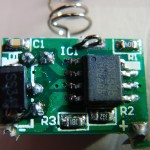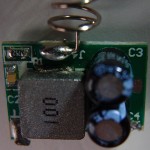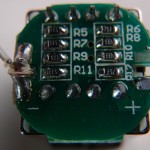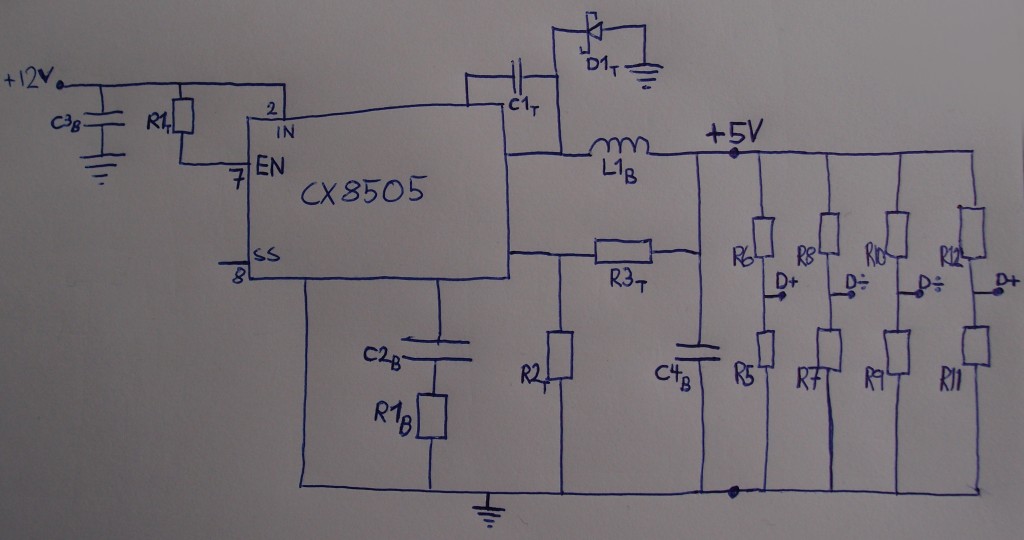I recently bought a Dual USB Car Cigarette Powered Charger from your well known gadget store in China. The specifications was spot on for what I wanted, two USB ports that could deliver at least 1 amp per port. Actually labeling states 1 A + 2.1 A. I ordered one and when received got too curious to what was on the inside. Partly because I like to take stuff apart, but also to calm my worry about putting this in my car and see it spontaneous burst into flames.
Product being dissected can be ogled in its full glory here.
I grabbed some pictures of the essential sides of the printed circuit boards (PCB), as there were two boards soldered 90 degrees onto each other. I forgot to take an initial picture showing the entire construction before I broke it into two pieces.
It is not an alarming amount of components, and on the upside they are clearly marked except the surface mounted capacitors. The PCBs were easy to reverse engineer, with a help of a strong flashlight and my beeping multimeter. The following schematics represents the two PCBs.
Components on the top side of the main board
- IC1 CX8505
- C1T unknown F, assumed 10 nF
- D1T SS34 schottky diode
- R1T 100k ohm
- R2T 3,3k ohm
- R3T 15k ohm
Components on the bottom side of the main board
- C2B unknown F, assumed 3,3 nF
- C3B 10 uF
- C4B 47 uF
- L1B 10 uH
- R1B 7,5k ohm
Components on the bottom side of the USB connector board
- R6 and R12 75k ohm
- R8 and R10 43k ohm
- R5, R7, R9, and R11 51k ohm
If you go to the trouble of searching for CX8505, you will find the component at the manufacturer, with a matching datasheet in Chinese. From this information I added the assumed values to the unknown components.
The manufacturer of the charger has chosen to add a schottky diode, assumedly to protect against short circuiting the USB ports. The datasheet for CX8505 also states there is a built in protection.
Another interesting detail is that the SS pin (soft start?) on CX8505 is not wired through a capacitor down to ground, as recommended in the datasheet.
Reading further through the CX8505 specifications we can calculate Vout using the formula 0,925 * (1 + R1 / R2), where R1 is component R3T, and R2 is component R2T. This will give us 0,925 V * (1 + 15000 / 3300) = 5,13 V. Well withing the USB specification, and since it’s on the upside of 5 V allow for some loss in USB cables.
After completing the dissection and reverse engineering the schematics I was not strongly reluctant to use this in my car. Looking at other USB chargers from China, they all seem to offer this 1 A + 2.1 A combination. I would not be too surprised if they all have a very similar design.



